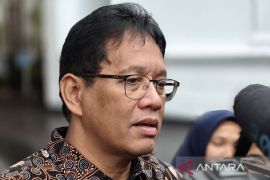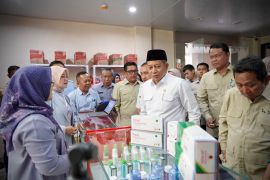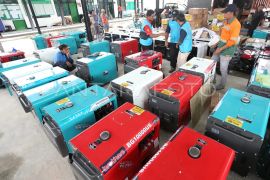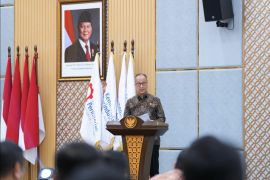The country has so far used only around 28.5 percent of its pearl cultivation potentials in eastern Indonesian waters such as in West Nusa Tenggara, Maluku Islands, and Papua.Jakarta (ANTARA News) - Having the potential to produce up to 20 million tons of south sea pearl (SSP) a year, Indonesia intends to increase its pearl production to seven million from 5.7 million tons in 2010.
The country has so far used only around 28.5 percent of its pearl cultivation potentials in eastern Indonesian waters such as in West Nusa Tenggara, Maluku Islands, and Papua.
Of the total pearl production at 5.7 million tons, about 95 percent was exported to Hong Kong, India, the Philippines, and Japan with a total value of roughly 30 million dollars last year, Marine Affairs and Fisheries Minister Fadel Muhammad said on October 12 when opening an Indonesian Pearl Festival 2011 being organized at Grand Indonesia Shopping Town, in central Jakarta, until October 16, 2011.
"It`s far below the world`s total pearl trade value estimated at 1.5 billion US dollars per year," he said.
Viewed from the country`s pearl trade value, Indonesia ranks eight in the list of the world`s SSP main exporting countries, after Hong Kong, Australia, China, Japan, Tahiti, Swiss, and the US.
Indonesia is the world`s largest producer of SSP which has unique characteristics in term of color and sparkle that make SSP popular in the international market.
The marine affairs and fisheries ministry`s director general of aquaculture product management and marketing, Victor Nakijuluw, said in Jakarta on September 7, 2011, that Indonesia supplied 53 percent of the world`s SSP demand.
The Indonesia Pearl Festival, which is the biggest pearl exhibition in Indonesia, is being joined by around 55 pearl traders and producers, according to Victor Nikijuluw.
"The Pearl Festival will be organized annually," he said
He said the aim of the exhibition was among others to promoting Indonesia`s SSP in domestic and international markets and disseminate information on products and strengthen SSP marketing network.
"SSP is Indonesia`s prime commodity that has high economic value and good market prospect," he said.
The Pearl Festival 2011, which is held for the first time, offers various products and types of south sea pearl and handicrafts made of marine and aquaculture products.
Colourful pearls such as white, yellow, pink and black pearls are being offered in the festival, at a price of up to Rp75 million per pearl.
President Susilo Bambang Yudhoyono has instructed the acceleration of development in eastern Indonesian regions. In this case, pearl can become main product of the regions, the minister said.
West Nusa Tenggara, for instance, produced around 600 kg of pearl annually, according to Bambang Setiawan, the deputy chairman of the Indonesian Pearl Cultivation Association`s organization section, in Lombok Sumbawa Pearl Festival 2011 which was held Mataram, West Nusa Tenggara (NTB), last July.
The NTB pearls, which have 27 different colors, are exported to pearl jewelry producers overseas, including in New York (the United States), Tokyo (Japan) , Geneva and Zurich (Switzerland), and Milan (Italy).
South sea pearl has been considered Indonesia`s main export commodity having high economic value and bright prospects.
The SSP cultivation businesses involve at least 27 medium and large scale companies employing more than 8,000 workers particularly in eastern Indonesian regions.
Given the huge pearl production potentials in this country, Minister Fadel has called for the strengthening of the national pearl branding.
"It`s pity if the SSP branding is not managed properly. I want this to become our image," Minister Fadel said in the opening of Pearl Festival 2011 at Grand Indonesia, here on Wednesday.
Minister Fadel planned to revitalize the SSP business by among other things strengthening associations related to pearl cultivation, boosting promotion activities, and issuing a presidential decree on coastal land spatial to support the SSP cultivation business.
"In the near future a ministerial decree on pearl culture and trade will be issued," he said.
He said the decree would among other things regulate the standards of pearls that were brought into or taken out of the country.
Fadel said a lot of pearls had been taken out of Indonesia easily in plastic bags by tourists due to the absence of regulations.
"People have easily taken pearls abroad without having been registered first causing their price to fluctuate and bad," he said.
The minister hoped with the issuance of the regulation on pearl culture pearl trade would be more orderly and progressive. He did not tell the date when the regulation would be issued.
Other problems relating to pearl culture meanwhile are among others theft during harvest seasons that have caused a loss to farmers and arrivals of low quality or fake pearls from China, he saisd.
With regard to security Fadel said he would coordinate with the navy and marine police to get a standard of security needed in pearl culture.
Indonesia`s SSP has received international recognition for its high quality.
"The quality of Indonesian pearls, including from Lombok, is excellent. In general, Indonesia`s oyster lips are more goldish, and buyers prefer them. So, Indonesia cannot be considered inferior in this business," Simon Adams, the managing director of Atlas South Sea Pearl, an Australian pearl company, said as quoted by Kompas last July.
Simon said he had traveled around the world to look for the finest pearls, and he has found them in Indonesia. "I think I have found the best pearls here, in Indonesia," he said.(*)
Reporter: By Fardah
Editor: Heru Purwanto
Copyright © ANTARA 2011










